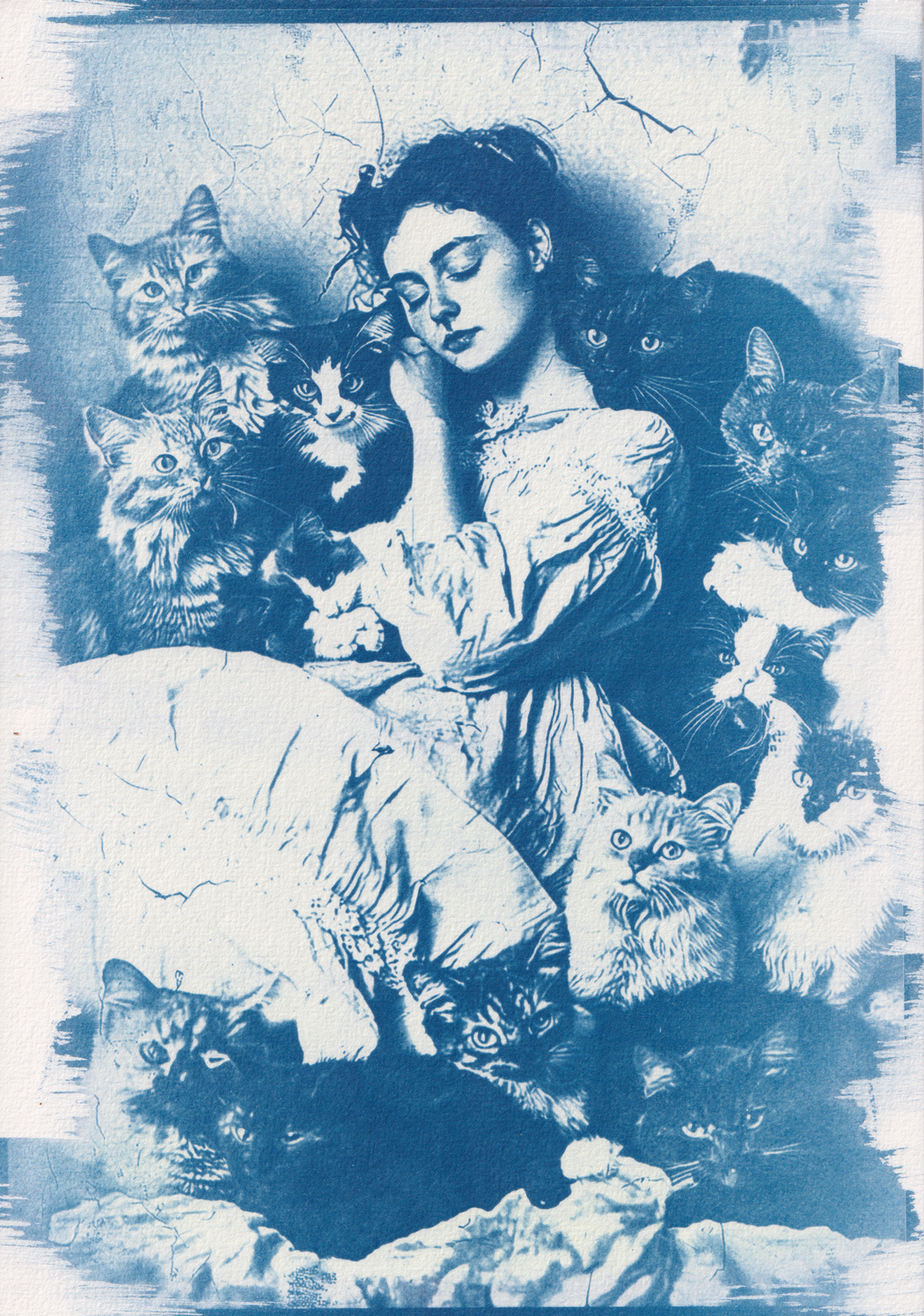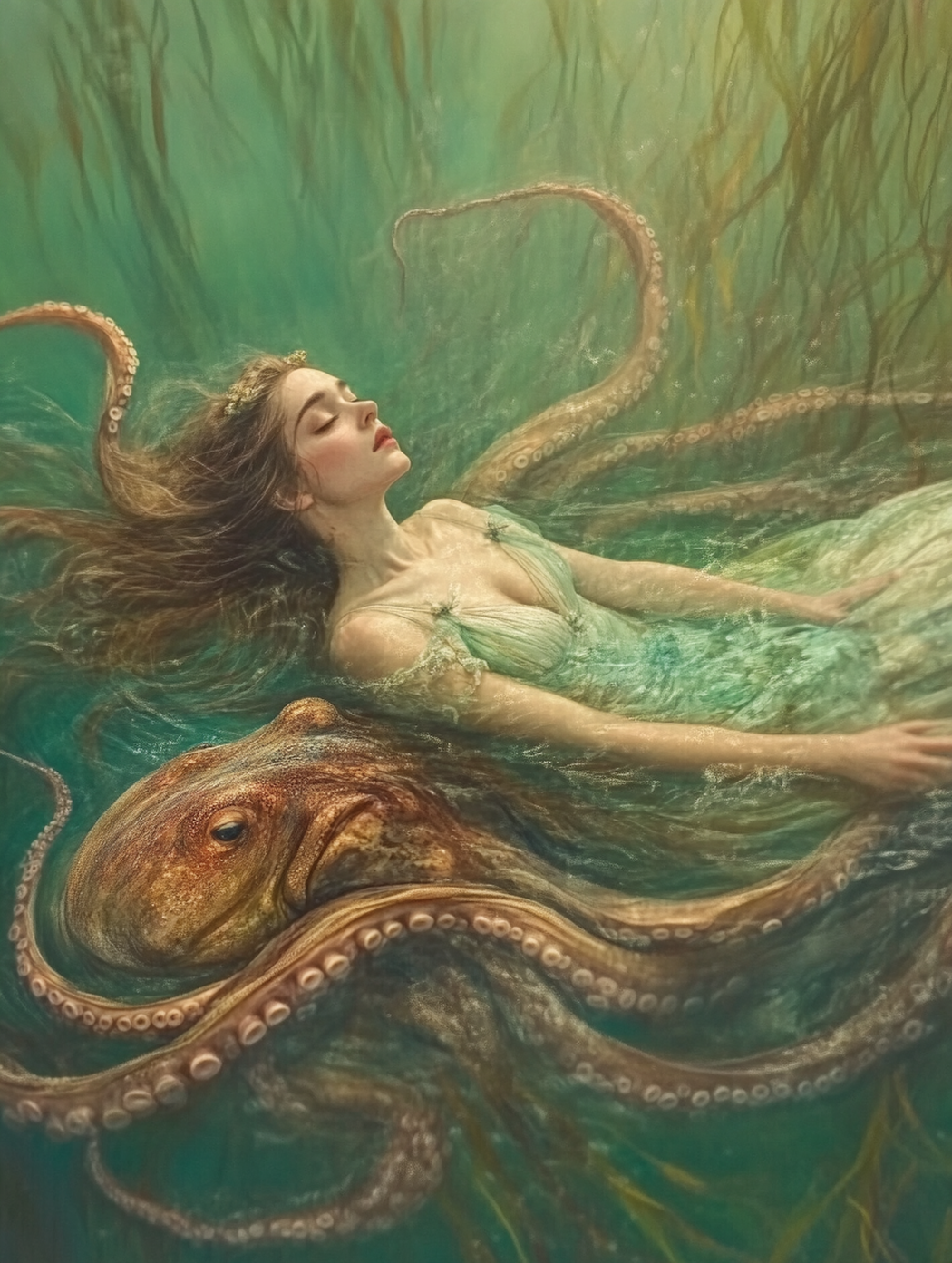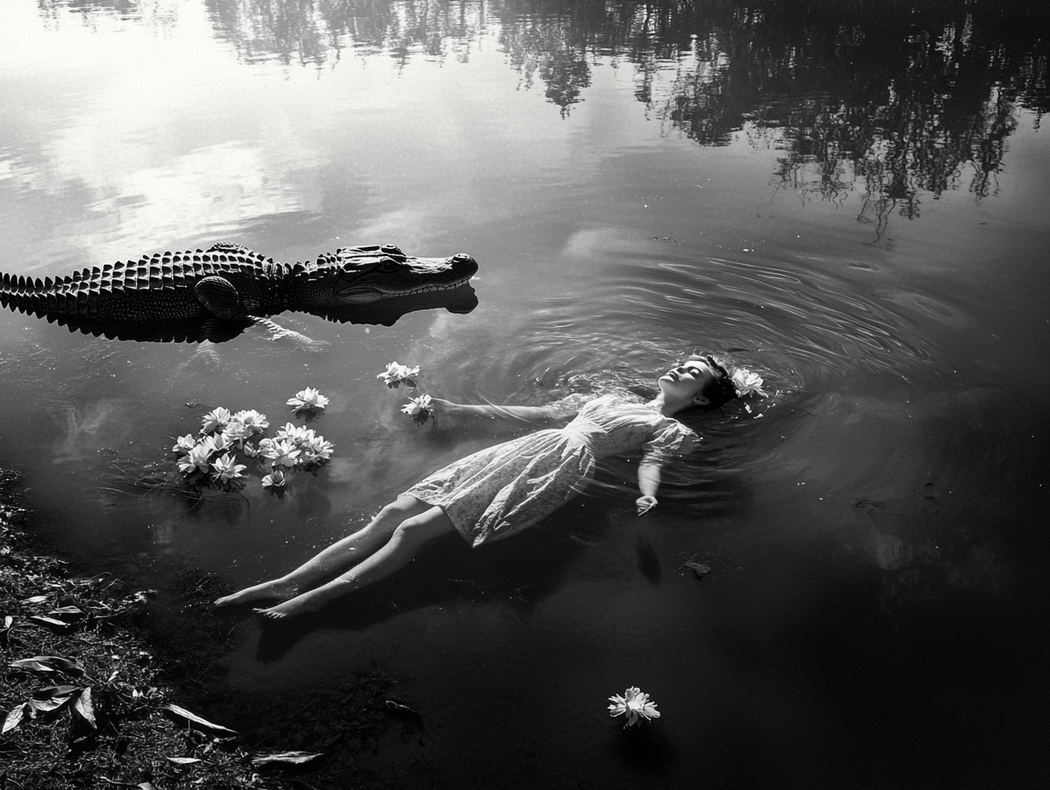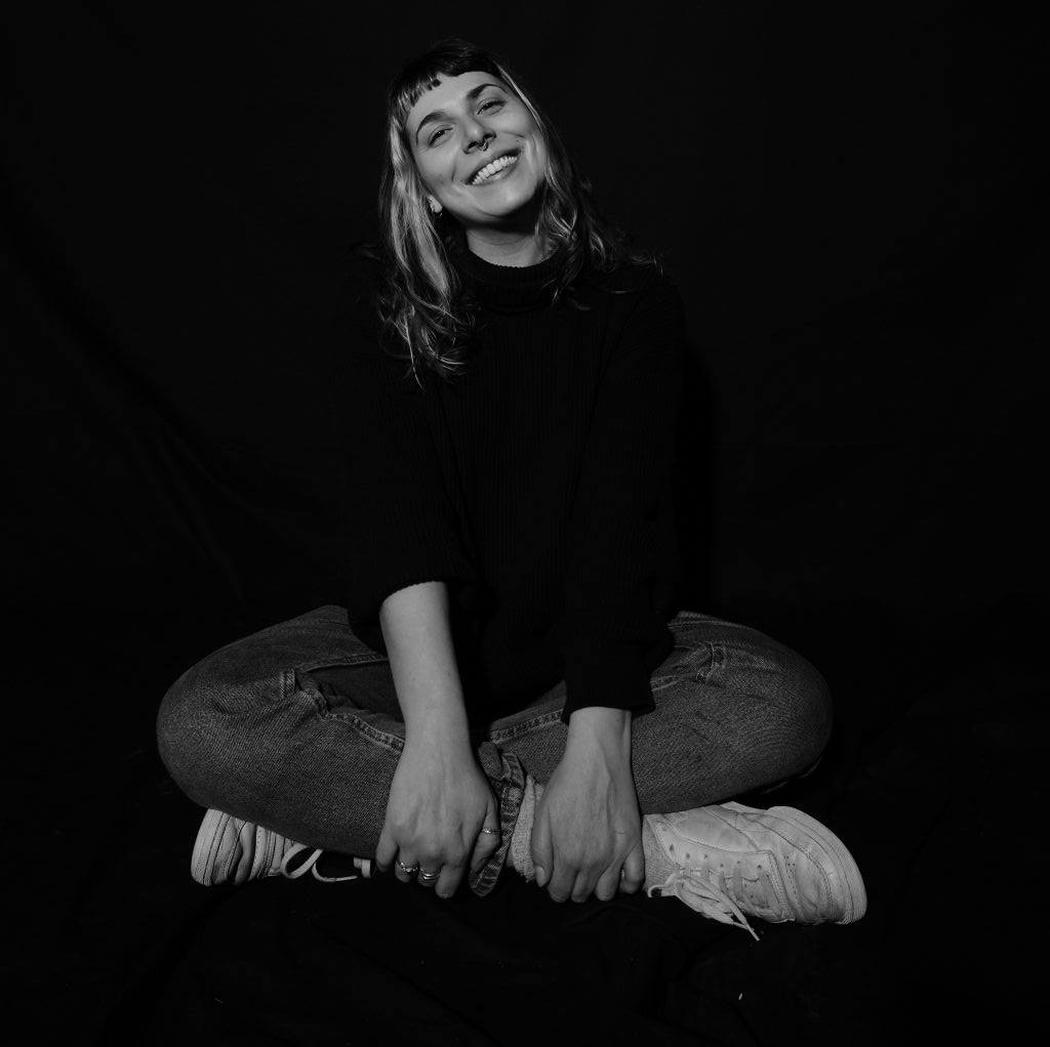Iride Scent
Year of birth: 1994
Where do you live: I live in Tuscany, Italy. Currently, I divide my time between Lucca and Siena, where I work as a teacher.
Your education: I attended the Art High School of Lucca with a focus on music, then continued my studies at the Academy of Fine Arts in Carrara, where I graduated in Net Art and Digital Cultures. I also spent a year studying Multimedia Fine Arts at the Polytechnic University of Valencia, in Spain. Additionally, I completed a certification course in Multimedia Communication Technologies and Techniques at Roma Tre University.
Describe your art in three words: Surreal, imaginative, fairy-tale-like
Your discipline: Mixed media, primarily digital art and prints
Website | Instagram
Your work seems to inhabit a space between memory and imagination. How do you approach this balance in your creative process?
My work is rooted in the fusion of ancient and contemporary techniques. The creative process begins by generating images that echo the photographic style of the late 19th and early 20th centuries, created using artificial intelligence — a modern and often controversial tool. From these images, I produce photographic negatives, which I then print using cyanotype, one of the oldest photographic printing methods, dating back to 1842.
This combination of AI and analog photography is essential to the final piece. Two mediums that, in different eras, have often been seen as threats to traditional art instead become powerful tools in my hands. In a time when it feels like everything has already been created, I believe these technologies offer the momentum we need to explore new forms of expression and open alternative paths for visual storytelling.
The use of cyanotype gives tangible, physical presence to what were originally digital images. Thanks to the age of the technique and its characteristic toning, the prints often appear to come from a distant past — like photographs found in an old suitcase tucked away in an abandoned attic.
I’ve always felt a deep nostalgia for eras I never lived through — a strange sense of belonging to an imagined past that doesn’t truly belong to me, yet feels profoundly familiar. Through these processes, I give shape and substance to that emotion: it’s a way of exorcising it, of making it visible and shareable. Art becomes the space where that longing is transformed into creation, into storytelling, into suspended time.
In my work, I seek to recreate a nostalgic, surreal, dreamlike, and impossible past — a time that never existed, yet somehow feels real. In the series “My Pets”, for example, I imagine young girls dressed in Victorian attire who keep absurd and unexpected creatures as pets: dinosaurs, octopuses, bats, cockroaches… Improbable pairings that, through the lens of a vintage aesthetic, take on a sense of truth and invite the viewer to suspend disbelief and step into a world hovering between reality and imagination.

You describe your prints as “light, time, and chemistry speaking in forgotten tongues.” Can you elaborate on what this means to you?
When I describe my prints as “light, time, and chemistry speaking in forgotten tongues,” I mean that these images are not just visual — they are the physical result of a process that involves essential, ancient elements. Light is what impresses the image onto the surface; time is not only the duration of exposure, but also the memory, the history, the slowness of the gesture; and chemistry is the living substance of the print — it reacts, transforms, and makes each image unique.
The forgotten tongues are the photographic techniques of the past, like cyanotype, which today feel almost arcane, alchemical. They speak a different language from the digital one — a language made of waiting, imperfections, and direct contact with material. It’s as if, through these images, we could hear a distant echo — a voice from a time never lived, but imagined, and that we can now only sense.
As a Multimedia Lab teacher, how does your teaching practice influence your artistic work — and vice versa?
Teaching and artistic practice constantly feed into one another. Working with students pushes me to continuously question languages, techniques, and visual approaches — to explain, simplify, and deconstruct. This process helps me see my own work with fresh eyes and often leads to questions that fuel my personal research as well.
At the same time, bringing my approach into the classroom — one rooted in experimentation, in blending old and new, and in focusing on process rather than just outcomes — allows me to share a vision of art as something alive, open, and evolving. I deeply value mistakes, intuition, and freedom, and I try to nurture those same elements in both my work and my teaching.

What draws you to alternative photographic techniques, and how do they shape the stories you want to tell?
I’ve always been fascinated by analog printing. The darkroom, to me, feels like a small chamber of alchemy — a space where time slows down, and every gesture becomes part of a quiet ritual. When I immerse the paper into the baths, whether chemical or just water, the image slowly begins to appear, as if surfacing from a dream or a forgotten memory. It’s a sacred, suspended moment that moves me every time.
What captivates me most is the physicality of the process: watching an image come to life, quite literally, in my hands. Each print is unique, unrepeatable, even if made from the same negative. It changes with the conditions, the timing, the subtle imperfections of the hand. It’s a slow, silent work that demands presence and attentiveness. In a time dominated by speed and digital perfection, I find something deeply poetic in this slowness — in the fragility of matter transforming into image. It feels as though each photograph carries a secret story within it, one that reveals itself only to those willing to pause and truly see.

How does wandering through Italy inform your artistic vision? Do specific landscapes or cities often inspire your work?
It’s not landscapes that inspire me as much as what lingers in places when time settles and becomes memory. My greatest source of inspiration has always been my family home in Lucca, Tuscany — a living archive made of silence, echoes, and gentle dust.
As a child, together with my mother, I would rummage through old boxes hidden in furniture and closets: precious containers filled with yellowed photographs, handwritten love letters, forgotten sheet music, wax-sealed vinyl records, vintage clothes, framed portraits of ancestors I had never met.
Each object was a threshold. Each photograph, a world. There were stories woven like delicate threads: voyages to America, letters exchanged between distant loves, the war, bombings, the German occupation of the house. But also betrayals, illegitimate children, secret passions. My grandfather would tell me everything, in a voice that seemed to come from another era, as if telling these stories was a way to hold ghosts and give them back a face.
Those stories enchanted me from the very beginning. They were not just family tales; they were domestic myths, romantic echoes imprinted on fragile objects. I believe my work is born from that — from the desire to give shape to a past I never lived but deeply feel. The images I create are attempts to capture that suspension, that gentle vertigo felt when confronted with a memory that does not belong to us, yet speaks to us with a mysterious force.
What role does tactility play in your process? Do you see your works as objects as much as images?
Yes, I consider my works as objects, not just images to be passively observed, but tangible pieces with a physical presence and a story told through their very material. I like to think of them as “historical fakes”: impossible, surreal worlds and eras where reality blends with imagination. In these imagined universes, the women I portray are often dreamy, sleepy, lost in their thoughts — figures suspended on the fragile border between dream and wakefulness.
Alongside them, unexpected and almost fantastical animals — bats, dinosaurs, creatures that defy time and logic — help create an unusual atmosphere, evoking the mysterious and unsettling charm of surrealism.
Tactility is an essential part of my process because I want viewers to feel a connection with the material and the passage of time, so that the work is not only something to look at, but also something that tells a different, more immediate and tangible story.

Is there a particular piece that feels especially personal or significant to you? Could you tell us about it?
There isn’t a single piece that I feel is more personal or significant than the others, because my work is mostly about the relationship between the images within a series. It’s the series as a whole that I find important, since each piece connects with the others, creating a larger, coherent story.
The world I try to build is both new and old—a place suspended in time where past and imagination meet. It’s a world that feels magical, almost like a fairy tale, and sometimes even childlike—as if I’m trying to recapture that sense of wonder and the ability to see the world with wide, amazed eyes.
This feeling fascinates me deeply and lies at the heart of my creative journey: it’s not just about telling individual stories, but about creating a narrative space that invites the viewer to get lost and find themselves within this imagined world.


Leave a Reply